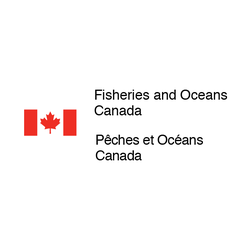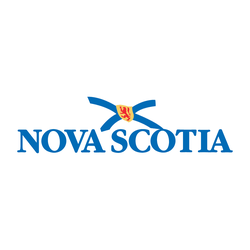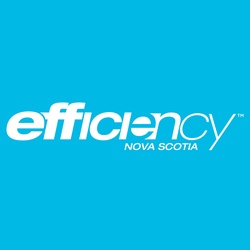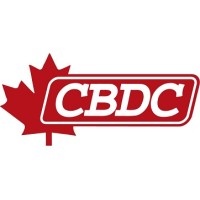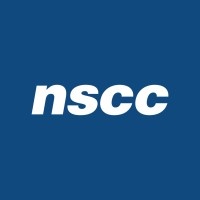Overview: Manufacturing grants and funding in Nova Scotia
Nova Scotia’s manufacturing ecosystem benefits from a layered funding landscape that spans provincial incentives, Atlantic regional programs, and national grants. Manufacturers can combine rebates, tax credits, vouchers, and non‑repayable contributions to reduce project costs for equipment purchases, automation, clean manufacturing upgrades, R&D, exporting, and workforce upskilling. Whether you operate in Halifax Regional Municipality (HRM), Cape Breton, Dartmouth, Truro, New Glasgow, Yarmouth, or the Annapolis Valley, targeted assistance exists for food and beverage processing, seafood processing, forestry and mass timber, metal fabrication, plastics, electronics, boatbuilding, aerospace machining, and more. This guide gathers high‑intent information about manufacturing grants Nova Scotia, including the Nova Scotia Innovation Rebate Program, the Capital Investment Tax Credit, ACOA funding in Nova Scotia, NRC IRAP, CanExport, SR&ED support, and the Productivity & Innovation Voucher Program.
Why this directory matters for 2025
- The investment cycle for Industry 4.0 and automation continues, and programs prioritize productivity funding Nova Scotia and technology adoption funding Nova Scotia to help SMEs de‑risk capital investments.
- Clean growth and decarbonization are strategic priorities, opening opportunities for energy efficiency grants for factories Nova Scotia, carbon reduction manufacturing grants NS, and circular economy funding Nova Scotia.
- Export diversification remains critical, with export grants Nova Scotia, CanExport funding Nova Scotia manufacturers, and trade show funding manufacturers NS.
- Workforce development is central, with workforce training grants Nova Scotia, apprenticeship and training funding Nova Scotia, and incentives for Lean Six Sigma training Nova Scotia.
Core provincial programs for manufacturers
Innovation Rebate Program (Invest Nova Scotia)
The Nova Scotia Innovation Rebate Program supports manufacturers undertaking productivity improvements, technology adoption, advanced manufacturing, and modernization of facilities. Typical projects include purchasing new production lines, robotics and automation, CNC machines, industrial software such as ERP and MES, digital twin pilots, and factory modernization funding. Eligibility focuses on projects that increase competitiveness, create or retain jobs, and expand production capacity across the province, including Halifax manufacturing funding and Cape Breton manufacturing funding. Applicants should prepare a clear business case, vendor quotes, project timelines, and a budget aligned with program criteria, then apply for Innovation Rebate Program Nova Scotia through Invest Nova Scotia’s intake process.
Example eligible costs
- Manufacturing equipment grant Nova Scotia: machine centers, CNC, robotics and cobots, additive manufacturing, packaging automation.
- Technology adoption funding Nova Scotia: sensors, PLCs, SCADA, digital twin funding Nova Scotia, ERP software funding manufacturers NS, cybersecurity funding manufacturing NS.
- Process optimization: lean manufacturing funding Nova Scotia, warehouse automation grant Nova Scotia, quality control lab funding NS.
Capital Investment Tax Credit (Nova Scotia)
The Capital Investment Tax Credit Nova Scotia helps offset large capital expenditures for new or modernized manufacturing capacity. It is commonly used alongside the Innovation Rebate Program to improve the overall project financing stack for equipment, buildings, and production systems. Manufacturers across Halifax, Truro, New Glasgow/Pictou, Yarmouth/Bridgewater, and Cape Breton can use the credit for expansion projects, automation upgrades, and advanced manufacturing funding Nova Scotia initiatives. Applicants should maintain detailed capital asset lists, commissioning schedules, and invoices to substantiate eligible costs for the tax credit claim.
Productivity & Innovation Voucher Program
The research voucher program Nova Scotia connects manufacturers with universities and colleges to solve technical challenges, validate prototypes, and access applied research. Companies can work with Dalhousie, NSCC, and other institutions to tackle product design, materials testing, process engineering, and data analytics projects. The program supports R&D funding Nova Scotia manufacturing and research partnerships funding Nova Scotia, providing a bridge from concept to commercialization funding NS and pilot plant funding NS.
Workplace Innovation and Productivity Skills Incentive (WIPSI)
WIPSI supports workforce upskilling, focusing on training for productivity, continuous improvement, quality systems, and digital skills. Eligible activities include Lean Six Sigma, ERP adoption, safety training funding NS, and advanced equipment operation. For organizations in Halifax, Dartmouth, Truro, and Cape Breton, WIPSI funding for Lean Six Sigma training Nova Scotia can complement capital projects by ensuring teams can use new technologies effectively.
Atlantic and federal programs relevant to NS manufacturers
ACOA REGI and related streams
ACOA funding Nova Scotia, including Regional Economic Growth through Innovation (REGI), supports manufacturing expansion, productivity improvements, and technology adoption. Projects may include automation funding Nova Scotia, export readiness, clean growth, and supply chain resilience funding NS. Cape Breton industrial funding and Sydney/Cape Breton manufacturing grants can target modernization for metal fabrication, boatbuilding, and seafood processing equipment grants Nova Scotia.
NRC IRAP (Industrial Research Assistance Program)
NRC IRAP Nova Scotia provides advisory services and funding to support R&D, prototype development, and early commercialization. Manufacturers pursuing innovation and product development—such as electronics manufacturing funding NS, precision machining grants NS, or battery/clean tech NS funding—can work with IRAP to build strong technical plans and milestones. A common question is the difference between IRAP and ACOA funding in Nova Scotia: IRAP typically focuses on R&D and technology development with technical advisory services, while ACOA often supports later‑stage commercialization, productivity, and market growth.
Global Affairs Canada: CanExport
CanExport funding Nova Scotia manufacturers supports export market development, including export marketing grants, market intelligence subsidy NS, export readiness assessment funding NS, and trade show funding manufacturers NS. Halifax firms attending international trade shows can seek CanExport grant support for booth fees, travel, and marketing collateral, while companies across Truro, New Glasgow, and the Annapolis Valley can pursue export diversification funding Nova Scotia.
SR&ED tax incentives
SR&ED Nova Scotia manufacturers can claim tax credits for eligible R&D activities performed in Canada. These credits often complement NRC IRAP projects or in‑house development work on new processes, materials, and automation solutions. Keep contemporaneous documentation of hypotheses, experiments, iterations, and failures to support the claim and align with RS&DE requirements.
Clean manufacturing, decarbonization, and energy efficiency
Energy efficiency and emissions reduction
Clean manufacturing funding Nova Scotia supports energy audits grants for plants NS, HVAC upgrades factory grants NS, industrial heat recovery funding NS, and water/effluent treatment funding NS plants. Factories can pursue solar for manufacturers grants NS, heat pump for plants rebates NS, and warehouses cold chain grants NS to reduce energy intensity and improve resilience. GHG reduction projects can also align with ISO 14001 grant NS and ESG reporting for manufacturers funding NS.
Circular economy and waste reduction
Manufacturers may access waste reduction funding manufacturing NS and circular economy funding Nova Scotia to implement recycling, reuse, and by‑product valorization. Packaging equipment grant NS can be leveraged to reduce material usage, while quality control lab funding NS improves first‑pass yield and reduces scrap.
Sector‑specific opportunities across Nova Scotia
Food and beverage processing
Food and beverage manufacturing grants Nova Scotia support equipment for packaging automation, HACCP/CFIA compliance grants NS, food safety upgrades funding NS, and cold chain enhancements. Sustainable CAP agri‑food processing Nova Scotia can assist with productivity and market development for processors in Kentville/Annapolis Valley, Yarmouth, and Bridgewater. Export e‑commerce grants NS manufacturers can help specialty beverage producers and seafood processors expand online.
Seafood processing and ocean tech
Seafood processing grants Nova Scotia fund modernization of filleting, freezing, and packaging lines, industrial refrigeration funding NS, and warehouse automation for the cold chain. Ocean tech manufacturing funding Nova Scotia supports sensors, composites, and marine electronics used by boatbuilding and offshore suppliers across Halifax and Cape Breton.
Forestry, metal, plastics, and aerospace
Forestry manufacturing funding Nova Scotia supports mass timber and engineered wood products, while metal fabrication grants NS fund precision machining, welding automation, and robotics. Plastics manufacturing funding NS can target extrusion and injection molding modernization, including mold‑making equipment and quality metrology. Aerospace manufacturing funding NS often focuses on advanced materials, machining, and certifications aligned with export market requirements.
Boatbuilding and marine
Boatbuilding manufacturing funding NS supports hull fabrication, paint facilities upgrades, and compliance with CE/UL certification funding NS for international markets. Companies in Yarmouth, Lunenburg County, and Cape Breton commonly combine ACOA REGI, Innovation Rebate, and tax credits to finance multi‑year modernization.
Eligibility: who can apply for NS manufacturing grants?
Common applicant profiles
- SME manufacturing grants Nova Scotia: small and mid‑sized enterprises modernizing equipment or scaling capacity.
- Advanced manufacturing funding Nova Scotia: firms deploying robotics, cobots, and Industry 4.0 systems.
- Clean tech adoption manufacturing NS: manufacturers implementing energy efficiency and low‑carbon processes.
- Export grants Nova Scotia: companies pursuing new markets or trade shows.
- R&D funding Nova Scotia manufacturing: organizations developing prototypes and new products.
Typical requirements
Most programs assess economic impact (jobs, investment, GDP), productivity gains, export growth, innovation, and environmental benefits. Applicants should demonstrate financial capacity, matching funds, and a credible implementation plan. For workforce upskilling and apprenticeship incentive NS, employers outline training outcomes, certifications (ISO 9001/14001 grant NS), and safety improvements.
How to apply: step‑by‑step approach
Step 1: Define your project and objectives
Clarify whether your priority is equipment rebate Nova Scotia for a new production line, automation funding Nova Scotia for robotics, or export marketing grants Nova Scotia. Establish scope, timelines, and key performance indicators (throughput, energy savings, defect rate reduction).
Step 2: Build the financing stack
Combine complementary programs: for example, pair the Innovation Rebate Program with the Capital Investment Tax Credit, explore ACOA REGI for additional support, and plan SR&ED for R&D components. For export, consider CanExport. For training, include WIPSI. For clean upgrades, assess energy efficiency grants for factories Nova Scotia and decarbonization roadmaps funding NS.
Step 3: Gather documentation
Prepare vendor quotes, engineering layouts, energy audit reports, training curricula, and export plans. For IRAP, include a technical work plan and milestones. For CanExport, compile target market lists, trade show calendars, and IP protection export funding NS needs. For ISO certification funding Nova Scotia, outline scope, audits, and timelines.
Step 4: Submit and manage timelines
Track Nova Scotia grant deadlines for manufacturers this year and average approval timelines for Invest Nova Scotia Innovation Rebate. Keep communication clear, respond to clarifications promptly, and maintain procurement discipline (competitive quotes, contract milestones). Many programs require status reports and project completion evidence.
Step 5: Compliance and reporting
Implement internal controls to track eligible costs, time sheets for R&D, training attendance, and commissioning records. For SR&ED, maintain technical narratives. For clean projects, capture energy data before and after upgrades. For export programs, retain proof of activities and outcomes.
Regional snapshots: grants “near me” across the province
Halifax and Dartmouth (HRM)
Halifax manufacturing grants focus on robotics and automation grant Halifax, digital transformation grants manufacturing Nova Scotia, and Halifax factory energy efficiency rebate programs. ERP software funding manufacturers NS and cybersecurity funding manufacturing NS are common in HRM’s growing tech‑enabled plants.
Cape Breton and Sydney
Cape Breton manufacturing funding supports modernization for metal fabrication, woodworking, and seafood processing. ACOA funding for manufacturing expansion in Cape Breton frequently complements provincial programs, while sub‑regional organizations may assist with project development.
Truro, New Glasgow, Pictou
Truro manufacturing funding and New Glasgow/Pictou manufacturing grants often target export market development grant NS and process optimization projects in precision machining and plastics.
Yarmouth, Bridgewater, Annapolis Valley, Kentville
Yarmouth/Bridgewater manufacturing funding and Kentville/Annapolis Valley food processing grants emphasize cold chain, packaging, HACCP, and e‑commerce. Rural manufacturing grants Nova Scotia can help address access to specialized equipment and training.
Application tips and best practices for 2025/2026
- Match project objectives with the right program: e.g., Innovation Rebate Program eligibility for equipment upgrades Nova Scotia versus IRAP for prototype development.
- Start early: procurement, environmental considerations, and training alignments take time.
- Quantify outcomes: throughput increases, scrap reduction, energy savings, export sales.
- Prepare matching funds: typical matching funds required for Nova Scotia grants vary by program; maintain cash flow forecasts.
- Use certifications: ISO 9001/14001 grant NS and product certification funding NS strengthen competitiveness.
- Engage partners: Dalhousie/NSCC research partnerships funding for industry, college applied research funding NS, and pilot plant funding NS can accelerate innovation.
Inclusion and priority segments
Programs prioritize inclusive growth: Indigenous manufacturing funding NS, women‑led manufacturers grants NS, apprentices wage support NS, accessibility upgrades funding NS, and rural manufacturing grants Nova Scotia. Many streams encourage export diversification funding Nova Scotia to reduce concentration risk and enhance supply chain resilience funding NS.
Compliance, risk, and post‑award management
Maintain procurement fairness, conflict‑of‑interest policies, and environmental compliance (water/effluent treatment funding NS plants). Track assets purchased with public funding and maintain usage logs. If scope changes, consult the funding authority to update milestones or budgets. Post‑award audits may evaluate outcomes such as productivity improvement, job creation, and decarbonization impact.
Conclusion: Building a winning funding roadmap
Nova Scotia manufacturers can assemble a powerful funding roadmap by layering provincial incentives (Innovation Rebate Program, Capital Investment Tax Credit, Productivity & Innovation Voucher, WIPSI) with regional ACOA REGI and federal tools (NRC IRAP, CanExport, SR&ED). From robotics and CNC to clean process heat, from warehouse automation to export marketing, the province offers programs that reduce risk and accelerate growth. By planning early, aligning programs, and documenting outcomes, organizations across Halifax, Cape Breton, Truro, and the Valley can secure manufacturing funding Nova Scotia and convert projects into durable competitive advantage.



